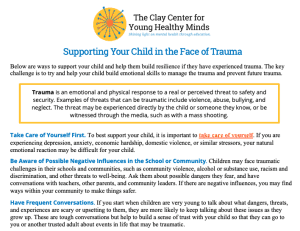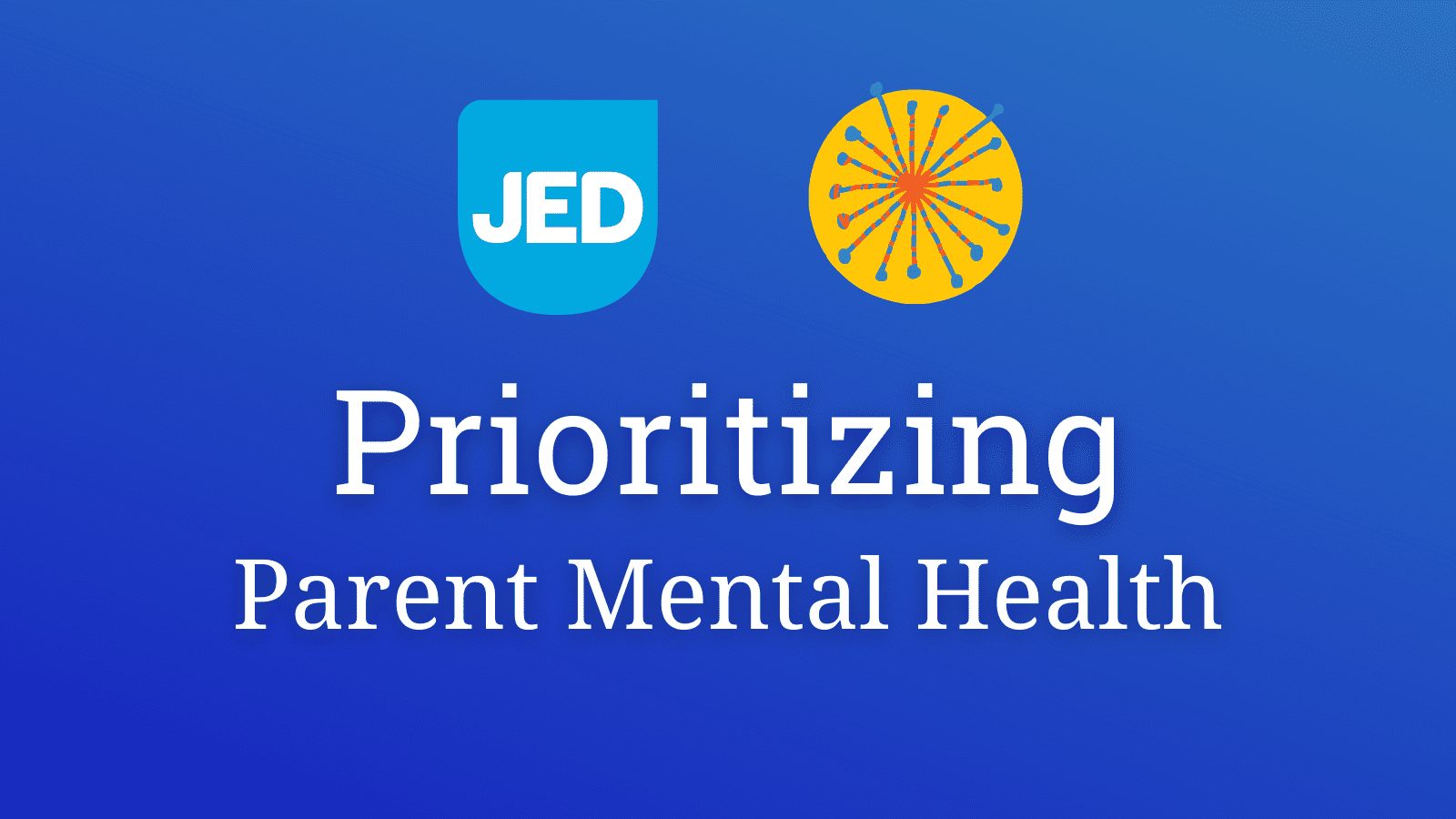Supporting Your Child in the Face of Trauma

Posted in: Grade School, Parenting Concerns, Pre-School, Teenagers
Topics: LGBTQ+, Mental Illness + Psychiatric Disorders, Stress
Este artículo está disponible en español.
As noted in Trauma: What Parents Should Know, trauma is a physical and emotional reaction to a real or perceived threat to safety and security.
The key challenge for parents and caregivers is to try to identify possible causes of trauma, help to lessen the impact by helping their child to build resilience – emotional skills and tools to help manage the trauma and prevent future trauma. If you notice signs of trauma, talk to your pediatrician and get help as soon as you can.
Below are some ways to support your child and help them build resilience if they have experienced trauma.
- Take Care of Yourself First. In order to support your child, it is important to take care of yourself. If you are experiencing depression, anxiety, economic hardship, domestic violence, or similar stressors, your natural emotional reaction may be difficult for your child. So, first, take care of yourself and your household.
- Be Aware of Possible Negative Influences at School or In Your Community. Children may face traumatic challenges in their schools and communities, such as those with community violence, alcohol or substance use, racism and discrimination, and other threats to well-being. Talk with them about possible dangers they fear, and have conversations with teachers, other parents, and community leaders. If there are negative influences, you may find ways within your community to make things safer.
- Have Frequent Conversations. If you start when children are young, such as in pre-school, and talk about what dangers, threats, and experiences may be scary or upsetting to them, they are more likely to continue talking with you about these issues as they grow up. These are tough conversations, but will help to build a sense of trust with your child so that they can talk with you or another trusted adult about events in their lives that may be traumatic.
- Make Your Conversations Teachable Moments. Whether you are using conversations to support a child who has been traumatized, or to enable them to help peers who have been traumatized, your ongoing conversations can be experienced as teachable moments. It is important to use your caring relationship and the attachment you have with your children to help them learn about the negative impact of racism, microaggressions, and bullying among other behaviors that result in trauma. We all want to support children who have been traumatized, but also use our caring relationship to foster thoughtful children who understand the interactions that hurt others.
- Explore More Specific Tips. For more information on tips about how to help children experiencing trauma, see “Parenting a Child Who Has Experienced Trauma.”
If you see signs of trauma, early intervention is helpful to both lessen symptoms and build resilience. Here are some of the most successful treatment methods:
- Psychotherapy. This includes evidence-based treatments like Exposure Therapy and Cognitive Behavior Therapy (CBT).
- Self-Help Groups. Children who have experienced trauma often find great relief talking with others who have also had similar experiences. Your local school district or school counselor may have ideas for accessing peer support resources for your child. In addition, NAMI (the National Alliance on Mental Illness) offers a range of peer support groups.
- Meditation. There are many forms of mindful meditation and breathing practice, including online resources and apps. We have seen more and more research that mindful meditation helps with stress, anxiety, and PTSD, promotes resilience and wellbeing.
- Support From Family and Friends. When children and adults are traumatized, they often shut down emotionally and feel isolated. It is important for you and your child to be supported by peers and other family members when experiencing a traumatic event.
- Medications. In some cases, there are medications that may be used short-term to help children find relief from the symptoms of PTSD.
Always reach out to your primary care pediatrician if you see changes in your child’s behavior after what may have been a traumatic event to identify mental health concerns early.
The effects of trauma can be treated. But trauma may be a very difficult challenge, so it’s important not to let your children manage this alone.
***
This article was originally published by Project TEACH, through the New York State Office of Mental Health: Download the PDF
To learn more about mental health concerns by child age group, visit the Project TEACH Parent and Family Page: http://bitly.com/PTEACH-Family
For more trauma-informed resources, visit the Project TEACH Prevention Science Page: https://projectteachny.org/prevention-science/
Special thanks to the Project TEACH Parent Advisor Group, who helped to develop this handout.


 Share
Share Tweet
Tweet





